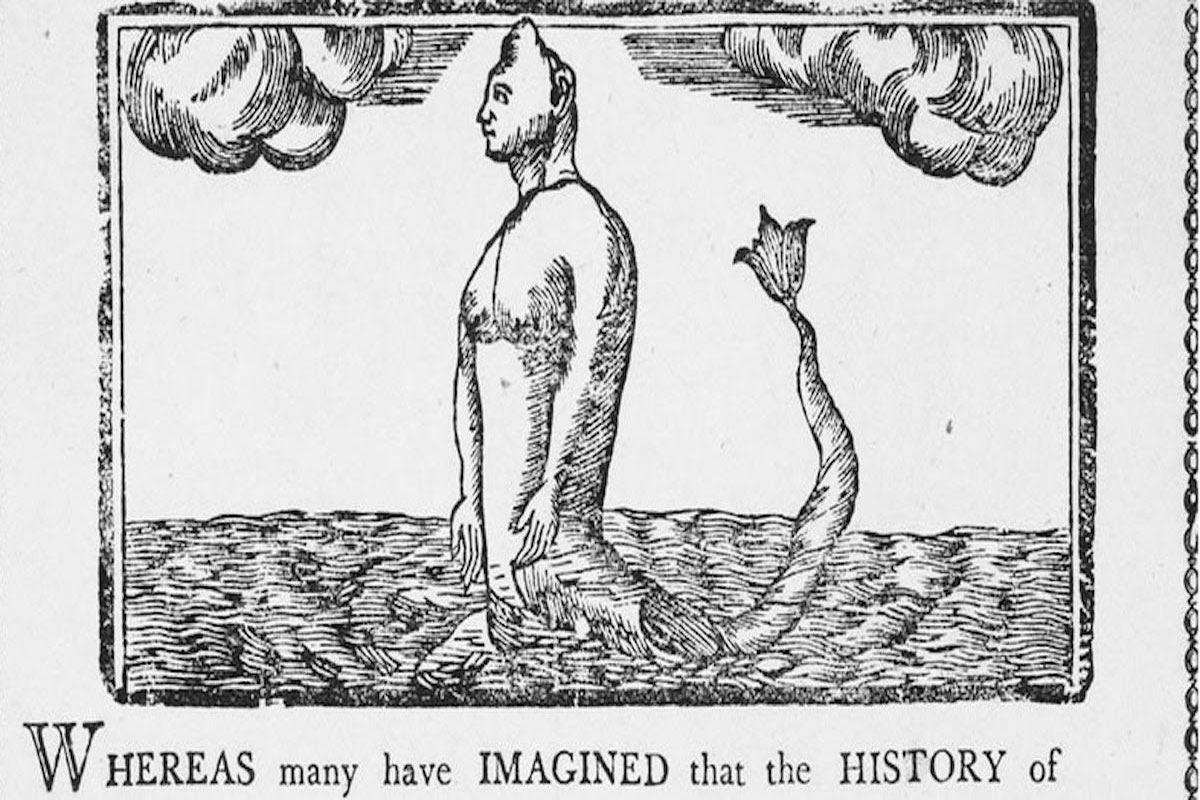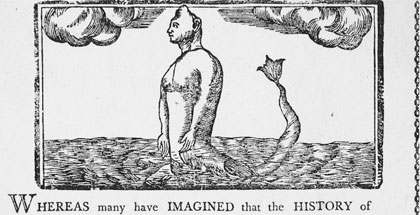
A brief history of what we think mermaids might look like
Thom Dunn 11:47 am Wed Oct 13, 2021
 Over Columbus Day weekend, I was reminded of that moron’s historical horniness for manatees. According to his journals, he noticed three manatees near the Dominican Republic on January 9, 1493, and mistook them for mythical mermaids, remarking that they were “not half as beautiful as they are painted.”
Over Columbus Day weekend, I was reminded of that moron’s historical horniness for manatees. According to his journals, he noticed three manatees near the Dominican Republic on January 9, 1493, and mistook them for mythical mermaids, remarking that they were “not half as beautiful as they are painted.”
Speaking of ugliness and mermaids, the Irish folklorists Thomas Crofton Croker and WB Yeats both recorded tales of their male counterparts, known as merrow. Like blanket octopuses, the mer-people are an example of extreme sexual dimorphism, with the males of the species essentially appearing as inversions of the fabled females — that is to say, fishy tops and human bottoms. This, Yeats noted, is why mermaids usually went after fisherman, instead of mating within their own species — because the male merrows were basically fish heads with penises¹.
Meanwhile, Vaughn Scribner recently published a piece at Public Domain Review that also chronicles the evolution of human assumptions from mermaids as they appeared in visual art throughout the eighteenth century.
Westerners’ combination of curiosity and imperial expansion is well reflected in the cultural relevance of merpeople. Wealthy individuals and philosophical societies funded naturalists’, botanists’, and cartographers’ expeditions to the New World in the hope that they might broaden humanity’s understanding of the world and their place in it. In an expanding number of investigations into mermaids and tritons, naturalists demonstrated a growing penchant for the wondrous. They also, importantly, revealed how the process of scientific research had drastically changed over the last two hundred years. Rather than relying strictly on ancient texts and hearsay, eighteenth-century naturalists mustered various “modern” resources — global correspondence networks, erudite publication opportunities, transatlantic travel, specimen procedures, and learned societies — to rationally examine what many considered fantastical. Thus, a growing body of gentlemen both carried on and eschewed the supposed narrative of enlightened logic by applying well-known, valid research methods to mysterious merpeople. In doing so, eighteenth-century philosophers such as Cotton Mather, Peter Collinson, Samuel Fallours, Carl Linnaeus, and Hans Sloane complicated our — and their contemporaries’ — conceptions of science, nature, and humanity. The smartest men in the Western world, in short, spent much of the eighteenth century chasing merpeople around the globe
As I learned from this delightful Public Domain Review piece, even Ben Franklin and Cotton Mather were known to get a little horny for a sea monster every now and then. It’s a fun article, with some wonderfully weird visuals.
Mermaids and Tritons in the Age of Reason [Vaughn Scribner / Public Domain Review]
I had a little fun with this in my novel Pints of ‘Gansett Make You Strong, which sort of riffs on Yeats in a modern day Boston noir. At one point the detective finds a merrow smuggling drugs on the Chelsea docks and remarks:
He brought a webbed hand with a lit cigarette up to his ugly puckered fishface. His slimy blue-brown scales shined in the sunlight coming off the murky water, and the gills on his cheeks flared as he inhaled his smoke.
I’d met a few merrows before — a few of ’em even showed up at Mary-Cath’s funeral — but even by their standards, he was still an ugly motherfucker, the kind of spawn that even a mother would leave down the river to die. The glassy eyes on the sides of his head glanced around the docks, then he stomped out his cigarette and began to strip down. Once he was fully undressed, he looked around one more time, then dove into the water.
It wasn’t my first time seeing a naked merrow, but it’s still not a sight you ever get used to. Mermaids, on the other hand, they were nice to look at, all fish-bottoms and voluptuous tops. You could understand why they preferred seducing humans from the land to the males of their own species. Not that us human males looked so pretty with our clothes off, either. Dicks are pretty weird in general, no matter what the species.
boingboing.net



















